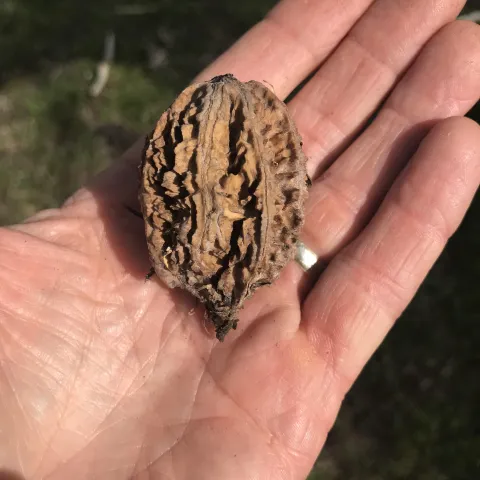Butternut, the Other Walnut

By: Steve Roark
Volunteer Interpreter, Cumberland Gap National Historical Park
Black walnut is well known to most folks, but there is another walnut native to our area. Butternut (Juglans cinerea), also called White walnut, likes to grow in the same deep, moist soils like its black cousin, but is becoming rare to find.
Butternut does not grow as large and stately as black walnut. It tends to have a scraggly look, often having several dead branches, and the canopy leaves are sparse. The bark is a light brown to gray color, and the leaves are compound, having 11 to 17 leaflets that are sticky. The fruit is a nut shaped like a football, and the meat has an oily, sweet taste.
When found large enough to cut for timber, butternut wood is used for carving, gunstocks, and furniture. It has become a rare find due to a canker disease that greatly shortens its lifespan. A tree large enough to cut for wood can demand a high price.
If you are lucky enough to find and collect some nuts, you will quickly learn that the butternut husk will stain fingers and clothes. The hairs on the fruit and even the inner bark produce a genuine dye that was widely used in the southern mountains to add color to homespun clothing. During the Civil War, the backwoods Confederate troops were sometimes dressed in homemade uniforms of butternut-dyed cloth, and the soldiers became known as “Butternuts”. So historically, the name of the tree became a synonym for tattered glory.
Native Americans used the tree for food, as a dye, and even tapped the sap to make a syrup sweetener. Medicinally, a tea made from the bark was used as a laxative, and oil from the nut was used to treat tapeworm and fungal infections. Squirrels use the nut, but they prefer the black walnuts because they store better.
- Log in to post comments